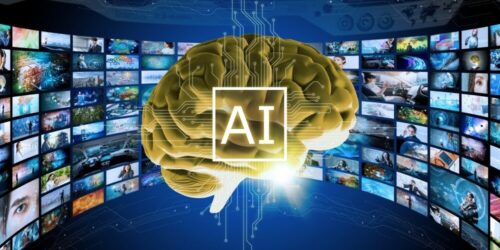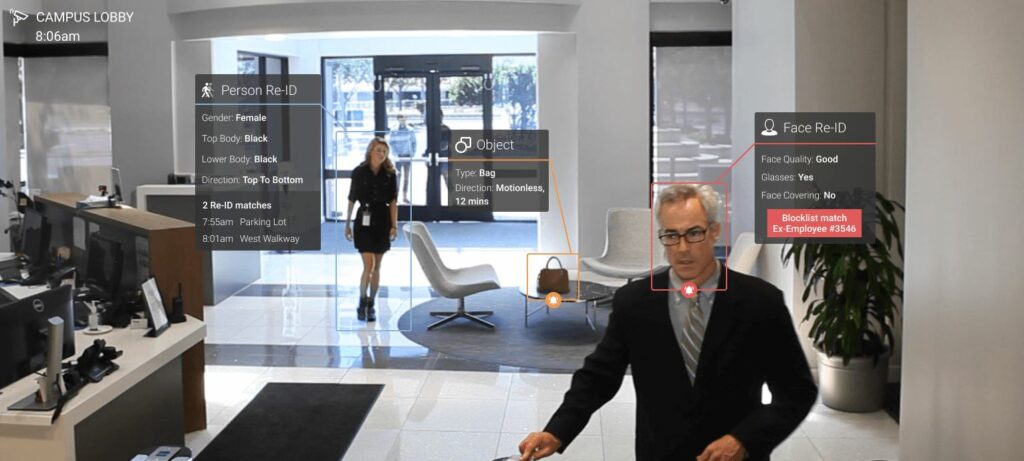
11.25.22 SSI – Brent Boekestein
To help better evaluate the various analytics solutions available, it is important to first define and understand the five primary classifications of video analytics.
Video analytics may have gotten a bad reputation in the past, mainly from spurned users who were promised the moon with little to show for it. A high false alarm rate and the inability to gather sufficient security insight caused many video analytics customers to turn them off completely. But analytics have come a long way in terms of capabilities, function and even cost.
All this has changed significantly with the evolution of AI-powered video analytics that employ purpose-built machine learning algorithms to detect real events of interest and utilize “layered AI” to learn and help identify new potential threats. Such powerful AI-powered video analytics can also provide new sources of data for advanced business intelligence applications that transcend traditional physical security operations into areas such as real estate and operations.
Beyond providing a heightened level of situational awareness and streamlined security operations, this level of advanced data intelligence has the potential to transform traditional security operations from being simple cost centers into profit centers.
However, it seems that many companies have jumped onto the AI video analytics bandwagon, quick to add the “AI” moniker, a logo and references on their website to tout their newfound positioning. And with so many providers making claims regarding analytics capabilities and performance, it can be difficult to determine which solution is the best choice for each use case.
To help better evaluate various analytics solutions available, it is important to first define and understand the five primary classifications of video analytics — Descriptive, Real-time, Diagnostic, Predictive and Prescriptive — in order to select and configure the best possible analytics solution for each specific application.
Descriptive Analytics
Descriptive analytics simply describe what has happened in the past. Using existing granular data, descriptive analytics paint a clear picture of events or actions that have already occurred and disseminate this information to end-users, often in the form of easy-to-understand charts, graphs and dashboards.
Stopping just short of explaining why something happened, descriptive analytics allow users to draw their own conclusions and insights based on aggregate data supplied by analytics.
The vast amounts of metadata gathered from security cameras, access control systems and visitor management logs may not mean much to an end-user when compared to high-fidelity AI-video analytics. For example, badge readers gather data such as access times, users, and frequency.
Although analytics can be applied to quickly analyze this data, because access analytics are low-fidelity, they may miss some key information such as instances of tailgating and piggybacking. As a result, the analytic data provided may be misleading or inaccurate.
Descriptive video analytics, on the other hand, deliver high-fidelity analytics with detailed, descriptive data that paints a whole picture rather than just a small piece. Because of its high fidelity, descriptive video analytics can identify that a single badge swipe was complimented by two individuals entering through a secure access point, creating a potential security risk.
In the past with simple access data, security administrators had little insight into this type of breach. But now, with higher levels of video analytics, the offending action can be quickly remediated before it becomes a known security risk.
Security teams that make use of descriptive video analytics have more situational awareness than those without. Real estate and facilities teams, for example, are now able to easily analyze where, when and how existing physical environments are being accessed and utilized using data gathered from descriptive analytics like historical traffic flows and space density.
Once this data is aggregated, these teams have valuable information at their fingertips that can be used in the future for space planning and redesign.
Real-Time Analytics
Similar to descriptive analytics, real-time analytics help users organize and measure data. But unlike descriptive analytics, which analyzes data gathered from past events, real-time analytics measures data as it is available using live-streamed data. Instead of waiting to gather data over time, users deploy real-real-time analytics to derive valuable insights as an event unfolds.
With this increased situational awareness, organizations have the chance to create more effective reaction responses. Now organizations can better understand the situation at hand and react quickly and appropriately to emerging situations, preventing potentially harmful events from occurring or taking advantage of available opportunities.
Real-time video analytics such as detecting critical area access, crowding and slip-and-falls are great examples of how AI can be used to promote health-safety standards within a workplace. As soon as one of the outlined behaviors or non-compliance is detected using real-time video analytics, administrators are immediately alerted to the event and can take remediating actions. Not only does this benefit organizations from a regulatory compliance standpoint but can also prevent serious injury or harm, and the resulting liability.

Security teams that make use of descriptive video analytics have more situational awareness than those without. (Image courtesy of Vintra)
Diagnostic Analytics
Diagnostic analytics are the natural next step following both descriptive and real-time analytics. Diagnostic analytics help explain the “why” behind events that have occurred. Providing a known or suggested root cause of an event takes the guesswork out of the equation for end-users, allowing them to better understand why trends and patterns within data sets occur. While not every diagnosis will be applicable, users can determine which correlations are most impactful and work from there.
Security analytics with diagnostics have business intelligence applications that go well beyond security. For example, for large organizations that often feature in-house dining options or corporate events, analyzing crowd sizing is important from a security, safety and staffing standpoint . Perhaps it was discovered that guest numbers are extremely high during certain times of day while being extremely low at others with no obvious reason as to why; it’s even possible management is not even aware of the pattern fluctuations.
Diagnostic analytics can help identify the key areas of foot traffic and crowding and these facilities and events and use that data accordingly. With this information, the business may want to consider relocating food stations to a different area or adjusting staffing hours to support high-traffic times. Gathering such data and making correlations using manual processes is both time- and cost-inefficient or even impossible.
Predictive Analytics
While descriptive, real-time and diagnostic analytics are focused on what has happened or is happening, predictive analytics focuses on predicting what might happen. Predictive analytics forecast future outcomes using what the system already knows to be true based on historical data. These predictions are not always accurate but can assist companies in ongoing risk reduction and goal-setting strategies that are based on numbers and data rather than an organization’s best guess.
For example, predictive analytics could forecast a surge of slip and fall cases in an upcoming rainy season, having recognized a pattern between the time of year and an increase of slip and fall cases recorded either within an HR system or through video surveillance analytics. Armed with this predictive knowledge, health and safety administrators can take preemptive steps to reduce slip and fall events during estimated periods of high rainfall.
Perhaps HR executives will send emails to staff reminding them of potentially slippery areas or the facilities team sets up more caution signs around entryways. Predictive analytics allows the organization to make the decision when it comes to rectifying a predicted event before it turns into a real security risk.
Prescriptive Analytics
Using the previous example where predictive analytics alerted administrators to a correlation between time of year and slip and fall events, prescriptive analytics would take this one step further to suggest a future course of action to remedy the issue.
The system might recommend more frequent floor cleanings, a dedicated space for individuals to dry off after entering the building or deploying more staff to clean areas known to be at high risk for a slip and fall incident. Advanced prescriptive analytics may even provide potential impacts for each course of action taken.
Prescriptive analytics are likely the most complex analytics available today, requiring vast amounts of data from various inputs in order to provide relevant suggested actions. While this is still an emerging science, we can look at prescriptive analytics as a fast-growing market segment that will be used in the near future by enterprise-level operations to streamline their workflows and further increase their automated business intelligence.
As the adoption and understanding of analytics continues to grow, organizations will continue to look to their solutions providers and systems integrators for assistance when it comes to providing the right analytics for their business needs. While all analytics may offer the opportunity for organizations to increase their business intelligence, improve efficiencies, better address health-safety concerns and comply with changing regulations, not every analytics mode is right for every business.
The same could be said for low-fidelity security analytics, as they do not have the same impact as high-fidelity AI-powered video analytics. Badge readers will always be limited by the amount of data they are able to gather during a transaction. Conversely, AI-powered video analytics are continuously unlocking a spectrum of new use cases and capabilities every day.
Security professionals who understand the purpose and value of each video analytic classification and the power of high-fidelity analytics will be able to better help their customers build an analytics architecture that supports their unique real-time and investigative requirements.
Brent Boekestein is CEO and Co-Founder of Vintra.
